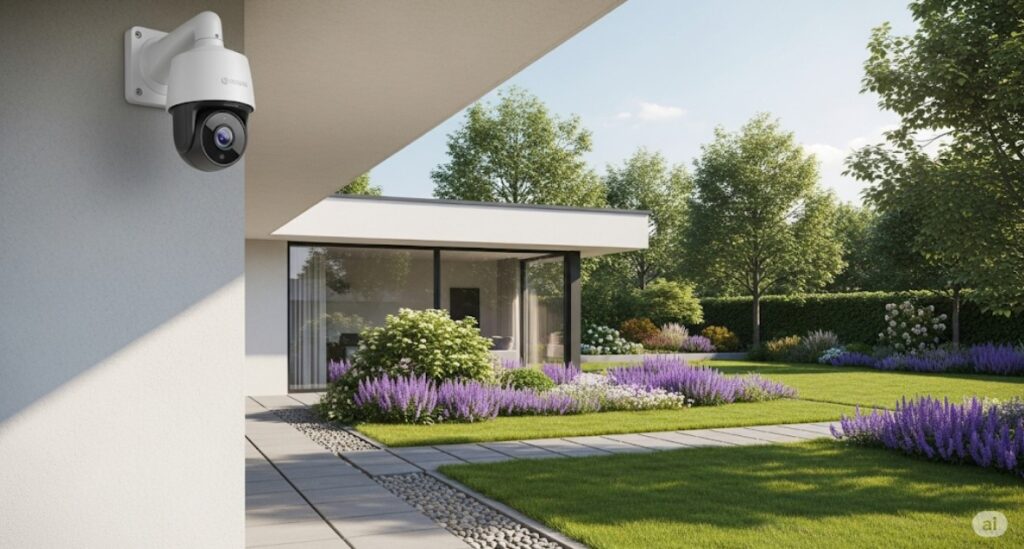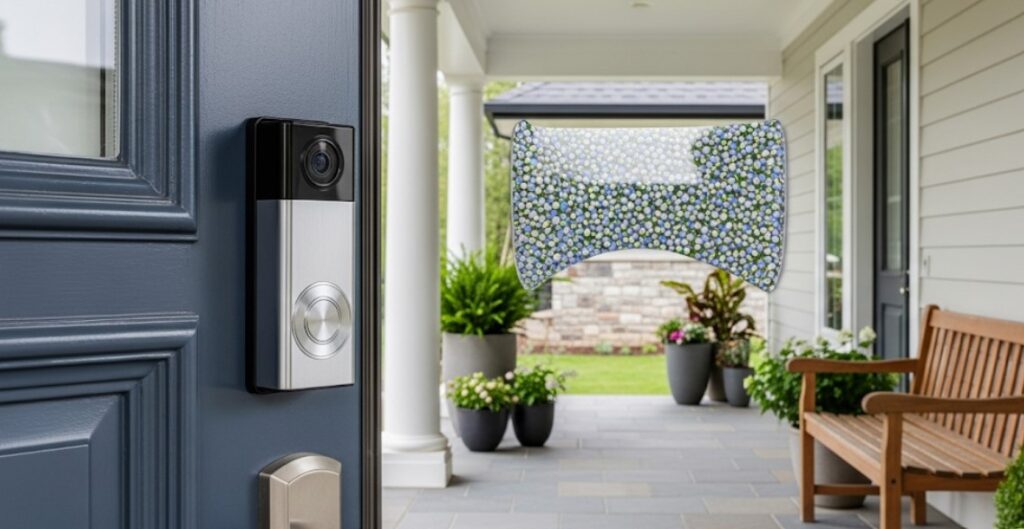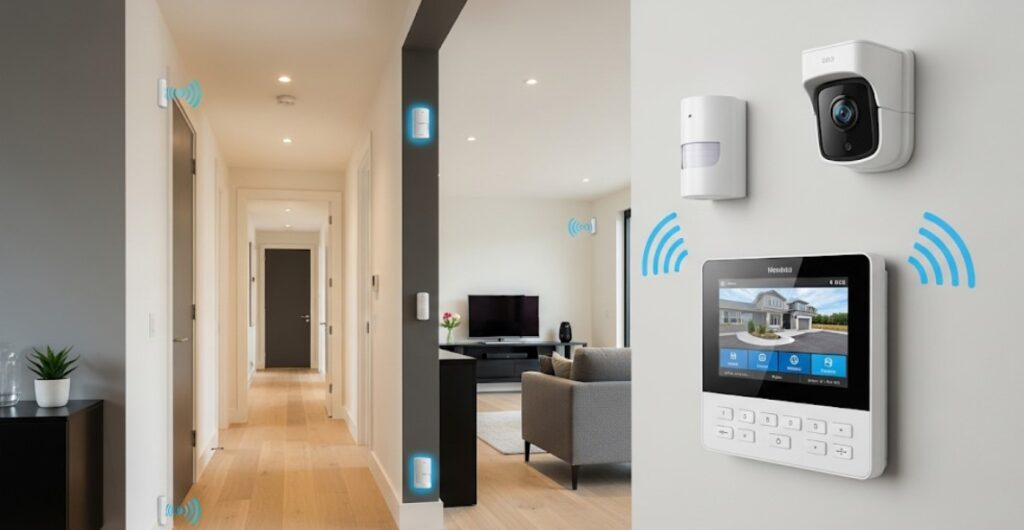Protecting your home and loved ones is a top priority, and a well-chosen Smart Home Security Systems can provide immense peace of mind. Let’s delve into the world of security systems home.
Table of Contents
An In-Depth Guide to Home Security Systems
A home security system is a network of integrated electronic devices that work together to protect your home and its occupants from intruders, fires, floods, and other emergencies. These best products can be simple, with basic sensors and alarms, or highly advanced, integrating with smart home devices for comprehensive control and automation.

I. Core Components of a Home Security System
Regardless of the type or brand, most security systems share common components that form their backbone:
- Control Panel (or Hub/Base Station): This is the brains of your system. It’s a central unit that communicates with all other security devices, processes signals, allows you to arm/disarm the system, and often connects to a monitoring center. Modern control panels often feature touchscreens and can be controlled via a mobile app.
- Entry Sensors (Door and Window Sensors): These two-part sensors are installed on doors and windows. When the door or window is opened, the circuit between the two parts is broken, triggering an alarm.
- Motion Detectors: These sensors detect movement within a designated area. They use infrared technology (PIR – Passive Infrared) to sense changes in heat (from a human body) or microwave technology. Many are “pet-friendly” to prevent false alarms from small animals.
- Security Cameras:
- Indoor Cameras: Used for monitoring activity inside your home, checking on pets, or even for two-way communication. Features often include night vision, motion detection, and cloud storage.
- Outdoor Cameras: Designed to withstand the elements, these monitor your property’s perimeter. They often come with features like spotlights, sirens, two-way talk, and advanced motion detection (distinguishing between people, animals, and vehicles).
- Video Doorbells: A popular type of outdoor camera, integrated into your doorbell. They allow you to see, hear, and speak to visitors remotely, and can send alerts for motion at your doorstep.
- Indoor Cameras: Used for monitoring activity inside your home, checking on pets, or even for two-way communication. Features often include night vision, motion detection, and cloud storage.
- Outdoor Cameras: Designed to withstand the elements, these monitor your property’s perimeter. They often come with features like spotlights, sirens, two-way talk, and advanced motion detection (distinguishing between people, animals, and vehicles).
- Video Doorbells: A popular type of outdoor camera, integrated into your doorbell. They allow you to see, hear, and speak to visitors remotely, and can send alerts for motion at your doorstep.
- Indoor Cameras: Used for monitoring activity inside your home, checking on pets, or even for two-way communication. Features often include night vision, motion detection, and cloud storage.
- Outdoor Cameras: Designed to withstand the elements, these monitor your property’s perimeter. They often come with features like spotlights, sirens, two-way talk, and advanced motion detection (distinguishing between people, animals, and vehicles).
- Video Doorbells: A popular type of outdoor camera, integrated into your doorbell. They allow you to see, hear, and speak to visitors remotely, and can send alerts for motion at your doorstep.
- Siren/Alarm: A loud audible device designed to deter intruders and alert occupants and neighbors when a breach is detected.
- Keypad: Used to arm and disarm the system, typically with a code. Many systems also offer key fobs for one-touch control.
- Environmental Sensors:
- Smoke and Carbon Monoxide (CO) Detectors: Crucial life safety devices that alert you to fires or dangerous levels of colorless, odorless CO gas. Many integrate with the security system to trigger broader alarms and notify monitoring centers.
- Water Leak/Flood Sensors: Detect water leaks in basements, near water heaters, or under sinks, helping prevent costly water damage.
- Glass Break Sensors: Listen for the specific sound frequency of breaking glass, providing an early warning of a window intrusion even if motion isn’t detected immediately.
- Yard Signs and Window Stickers: These act as visual deterrents, signaling to potential intruders that your home is protected.
II. Types of Home Security Systems
Home security systems can be broadly categorized by their installation method and monitoring approach:
A. Installation Method:
- DIY (Do-It-Yourself) Systems:
- Pros: Generally more affordable upfront, no professional installation fees, flexible equipment choices, and no long-term contracts (often). You have full control over placement and customization.
- Cons: Requires you to set up everything yourself (though many are designed for easy installation), and troubleshooting falls on your shoulders.
- Professionally Installed Systems:
- Pros: Expert installation ensures optimal placement and functionality, often includes comprehensive system design, and professional support for maintenance and upgrades.
- Cons: Higher upfront costs, potentially less flexibility in equipment, and often requires long-term contracts.
B. Monitoring Method:
- Self-Monitored Systems:
- How it works: When an alarm is triggered, you receive alerts directly on your smartphone via an app. It’s your responsibility to check the situation and contact emergency services (police, fire, medical) if needed.
- Pros: No monthly monitoring fees, complete control over your alerts.
- Cons: Requires immediate personal attention; if you’re unreachable or unable to respond, there’s no backup.
- Professionally Monitored Systems:
- How it works: Your security system for home is connected to a 24/7 monitoring center. When an alarm is triggered, trained professionals receive the alert, assess the situation (sometimes by trying to contact you or view camera feeds), and dispatch emergency services on your behalf.
- Pros: Around-the-clock protection and immediate professional response, even if you’re away or incapacitated. Provides greater peace of mind.
- Cons: Involves monthly monitoring fees, which vary based on the service level.
III. Smart Home Integration
Many modern best home security systems seamlessly integrate with smart home platforms like Amazon Alexa, Google Assistant, Apple HomeKit, and Z-Wave/Zigbee devices. This allows you to control your security system with voice commands, create automated routines (e.g., lights turn on when motion is detected, doors lock when you arm the system), and manage all your smart devices from a single app.

IV. Example Products and Their Features
When considering the best security alarm systems or the best home alarm systems, several brands consistently come up. Here are a few prominent examples:
1. SimpliSafe
- Overview: SimpliSafe is a popular DIY-friendly home security system known for its ease of installation, no-contract professional monitoring options, and comprehensive sensor lineup. It’s often cited in Simplisafe reviews for its straightforward approach.
- Key Features:
- DIY Installation: Designed for easy self-setup in minutes.
- No-Contract Monitoring: Flexible monthly plans, including self-monitoring or 24/7 professional monitoring.
- Wide Range of Sensors: Offers door/window sensors, motion sensors, glass break sensors, smoke/CO detectors, water sensors, and even a “Panic Button.”
- SimpliCam/Smart Alarm Indoor Camera: Features 1080p HD video, night vision, and two-way audio. Some versions offer “Intruder Intervention” with a built-in siren and voice prompts.
- Outdoor Camera: Weather-resistant, 1080p HD, color night vision, integrated spotlight and siren.
- Smart Home Integration: Works with Amazon Alexa and Google Assistant for voice control.
- Cellular Backup: System stays connected even if Wi-Fi or power goes out.
2. Ring Alarm
- Overview: Part of the Amazon ecosystem, Ring Alarm offers a robust DIY security system that integrates seamlessly with Ring’s popular video doorbells and cameras. It’s a strong contender for the best alarm system for home if you’re already invested in Ring products.
- Key Features:
- DIY Installation: Simple to set up and expand.
- Affordable Professional Monitoring: Via a Ring Protect Plan, offering 24/7 monitoring, cellular backup, and video recording for all Ring cameras.
- Base Station: The core hub, often includes a siren and a 24-hour backup battery. The Ring Alarm Pro version includes a built-in Eero Wi-Fi 6 router for backup internet.
- Wide Device Ecosystem: Extensive range of door/window sensors, motion detectors (pet-friendly), smoke/CO listeners, flood/freeze sensors, keypads, and range extenders.
- Seamless Camera Integration: Connects with Ring Video Doorbells and Security Cameras (Stick Up Cam, Spotlight Cam, Floodlight Cam) for a unified view.
- Smart Home Integration: Deep integration with Amazon Alexa, allowing voice control and routines.
3. ADT
- Overview: ADT is one of the oldest and most recognized names in best home security systems, known for its professional installation and 24/7 monitoring services. They offer a highly reliable and comprehensive solution.
- Key Features:
- Professional Installation: Experts install and configure the system to your home’s specifications.
- 24/7 Professional Monitoring: Renowned for rapid response times from multiple monitoring centers.
- Extensive Equipment: Offers a full suite of traditional security components including control panels, door/window sensors, motion detectors, glass break sensors, smoke/CO detectors, flood sensors.
- Smart Home Automation: Strong integration capabilities, including smart locks (Kwikset, Schlage), smart thermostats, and smart lighting.
- Integration with Google Nest: Newer ADT systems often integrate with Google Nest cameras and smart displays, offering advanced video capabilities like facial recognition and activity zones.
- Service & Support: Comprehensive customer support, troubleshooting, and maintenance.
4. Vivint Smart Home
- Overview: Vivint offers a premium, professionally installed and monitored security system home solution that emphasizes deep smart home integration and cutting-edge technology.
- Key Features:
- Professional Installation: Expert installation ensures a seamless setup.
- 24/7 Professional Monitoring: High-quality, rapid response monitoring.
- Vivint Smart Hub: A central touchscreen control panel that serves as the command center for security and smart home devices. Features two-way talk to the monitoring center.
- Advanced Cameras: Includes sophisticated indoor cameras, outdoor cameras with smart deterrence (e.g., automatic spotlight and siren for trespassers), and advanced doorbell cameras (like the Vivint Doorbell Camera Pro with package detection).
- Comprehensive Smart Home Integration: Beyond security, Vivint deeply integrates with smart locks, garage door control, smart thermostats, and even car protection services.
- Vivint App: A highly rated app for total control of your security and smart home devices remotely.

V. Choosing the Right Home Security System
To find the best alarm system for home for you, consider the following:
- Budget: Factor in upfront equipment costs and ongoing monthly monitoring fees.
- Home Type & Size: Larger homes or properties with multiple entry points might require more sensors and cameras.
- DIY vs. Professional: Are you comfortable with self-installation, or do you prefer expert setup?
- Monitoring Preference: Do you want to self-monitor, or do you prefer the peace of mind of 24/7 professional monitoring?
- Smart Home Needs: How important is integration with your existing smart home devices (lights, thermostats, voice assistants)?
- Specific Threats: Are you primarily concerned with burglary, or do you also need protection against fire, flood, or carbon monoxide?
- Contracts: Are you comfortable with a long-term contract for professional monitoring, or do you prefer no-contract options?
By carefully considering these factors, you can select a home security system that provides optimal protection and fits your lifestyle. You can also check how to identify best seller product in specific category.

